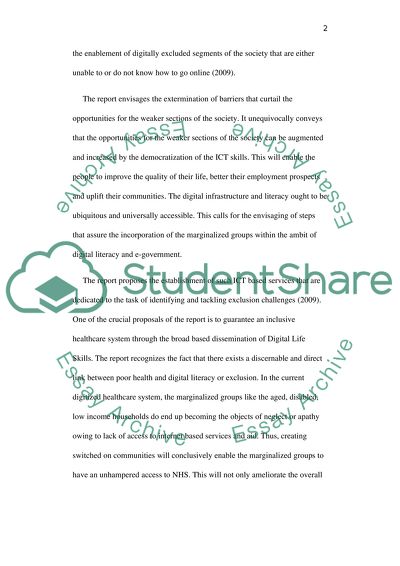Cite this document
(The Policies of Digital Inclusion in the UK Digital Britain Final Term Paper, n.d.)
The Policies of Digital Inclusion in the UK Digital Britain Final Term Paper. Retrieved from https://studentshare.org/social-science/1560561-e-government-social-inclusion-critically-assess-policies-of-digital-inclusion-in-the-uk-digital-britain-final-report-2009-and-compare-them-with-policies-in-singapore
The Policies of Digital Inclusion in the UK Digital Britain Final Term Paper. Retrieved from https://studentshare.org/social-science/1560561-e-government-social-inclusion-critically-assess-policies-of-digital-inclusion-in-the-uk-digital-britain-final-report-2009-and-compare-them-with-policies-in-singapore
(The Policies of Digital Inclusion in the UK Digital Britain Final Term Paper)
The Policies of Digital Inclusion in the UK Digital Britain Final Term Paper. https://studentshare.org/social-science/1560561-e-government-social-inclusion-critically-assess-policies-of-digital-inclusion-in-the-uk-digital-britain-final-report-2009-and-compare-them-with-policies-in-singapore.
The Policies of Digital Inclusion in the UK Digital Britain Final Term Paper. https://studentshare.org/social-science/1560561-e-government-social-inclusion-critically-assess-policies-of-digital-inclusion-in-the-uk-digital-britain-final-report-2009-and-compare-them-with-policies-in-singapore.
“The Policies of Digital Inclusion in the UK Digital Britain Final Term Paper”, n.d. https://studentshare.org/social-science/1560561-e-government-social-inclusion-critically-assess-policies-of-digital-inclusion-in-the-uk-digital-britain-final-report-2009-and-compare-them-with-policies-in-singapore.


